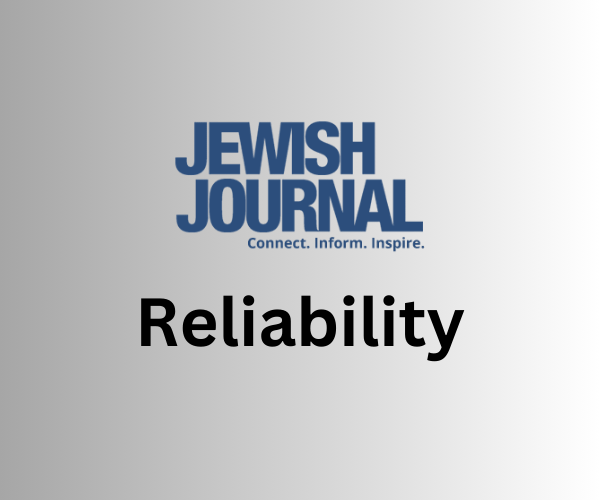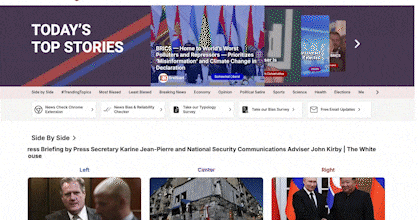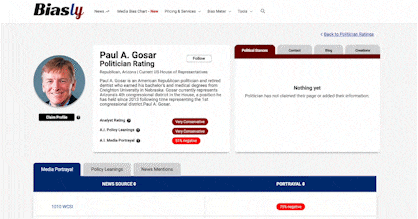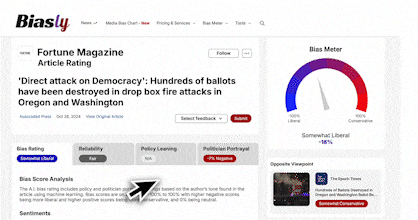
The Jewish Journal, based in Los Angeles, is a prominent publication that serves the Jewish community in the region and beyond. Since its inception, it has earned significant respect for its dedication to reporting on diverse topics, from local community events to international Jewish news and cultural, religious, and social issues pertinent to Jewish readers. With experienced journalists and contributors, the outlet offers a blend of opinions and news predominantly grounded in factual reporting.
Nevertheless, as with all publications, it is essential to approach the Jewish Journal with a discerning mind. While most of its content is informative and balanced, it does cater to a specific community. It may have inherent biases, especially in its opinion and editorial sections. Readers should feel empowered to cross-reference critical information and consider multiple perspectives when drawing conclusions based on the organization’s reporting practices.
Does Reliability Matter?
Reliability, in general, refers to how trustworthy or accurate information, or in this case, a news source is. If we consider this definition, it quickly becomes clear why reliability is important in media sources. If we can’t trust the things we read then there isn’t much of a point in continuing to consume content from that source, after all. So how exactly can we gauge the reliability of a news source anyways?
There are several potential measures of reliability to look out for when trying to determine whether a media source is reliable or not. Red flags for an unreliable article can include the presence of wild unsubstantiated claims, facts dependent on other unreliable sources, heavy use of opinionated language, and more. Some indicators of a reliable news source, on the other hand, include things like:
- Absence of subjective/opinionated language in articles
- Credible sources cited (e.g., neutral sources, .gov, .edu websites)
- Facts and statistics backed by multiple relevant outside sources
- Use of primary sources when possible (e.g., interviews, quotes)
- Information that remains consistent across news sources
So How Does the Jewish Journal Fare in its Reliability?
The political reliability index developed by Biasly objectively assesses news organizations’ accuracy and trustworthiness. The Jewish Journal’s overall Reliability Score has been rated as ‘Good’ by Biasly. This rating is a weighted average of two distinct scores: the Fact Analysis Score and the Source Analysis Score, each evaluating separate components of The Jewish Journal’s Reliability. When computing the Average Reliability of the article the Fact Analysis score is more heavily weighted. These ratings are as follows in the next two paragraphs:
The Jewish Journal’s Fact Analysis Score is ‘Good,’ which suggests readers can trust most of The Jewish Journal’s content online. The Fact Analysis score focuses more on the accuracy of claims, facts, and sources presented in the article and any hints of selection and omission bias, which we will discuss further in the article.
The Jewish Journal’s Source Analysis Score is ‘Fair,’ which suggests readers can trust some of the sources, links, and quotes provided by the news source. This score, which is based on A.I., focuses on assessing the quality of sources and quotes used including their number, lengths, uniqueness, and diversity.
However, since these scores are based on percentages and averages, individual articles could be more or less trustworthy depending on the context, author, and other factors. Our findings show that The Jewish Journal’s reliability is mostly but not all factual because they have retracted several stories in the past or had pieces that were not factual.
Let us analyze the supporting data for The Jewish Journal’s rankings and discuss what to watch out for while searching for trustworthy news sources.
Jewish Journal Accuracy and Reliability
The credibility of news organizations depends significantly on bias and cultural or religious orientation. Does the Jewish Journal have an issue with prioritizing specific perspectives over others or catering to a particular audience? To answer this question, we can evaluate the integrity of its news stories, deducing how well the publication supports assertions with evidence. Additionally, we will check for selection and omission bias as we assess the Jewish Journal’s correctness and factuality.
Selection bias is when stories and facts are selected or deselected, often on ideological grounds, to create a narrative in support of the new sources’ ideology. Omission bias, on the other hand, is when different opinions and political views regarding a situation are left out so that the reader is only exposed to the ideological perspective supported by the author. It’s important to keep in mind these two types of biases when trying to assess an article’s level of accuracy.
Biasly provides an accuracy score ranging from 1% (least accurate) to 100% (most accurate). We determine our ratings by evaluating the supporting evidence behind assertions and the quantity of trustworthy internal and external sources used. A dedicated section on Biasly’s website presents dependability and accuracy ratings for recent news stories from the Jewish Journal. As noted, analytics indicate that the Jewish Journal currently holds a Good reliability rating. However, this score may fluctuate between articles. The most significant discrepancies in reliability often arise from biases, especially selection or omission bias.
The first Jewish Journal article we will analyze is “Mayor Garcetti Officially Nominated As Ambassador to India” by Aaron Bandler. The piece discusses President Joe Biden’s nomination of Los Angeles Mayor Eric Garcetti as Ambassador to India. It provides a direct statement from Garcetti expressing his gratitude and emphasizing his dedication to service:
“I have committed my life to service – as an activist, as a teacher, as a naval officer, as a public servant, and if confirmed, next as an ambassador. Part of that commitment means that when your nation calls, you answer that call.”
The article further offers procedural details on what might transpire in the event of Garcetti’s confirmation, touching on potential outcomes for the position of the Los Angeles mayor.
In assessing for selection/omission bias, the article straightforwardly communicates the facts about Garcetti’s nomination without introducing opposing or supporting perspectives. There is no evident omission of crucial information, nor does the article show a discernible inclination either in favor of or against the nomination. Based on this assessment, we can place this article on the more centrist end of the political spectrum – due to its objective presentation of facts without exhibiting noticeable bias.
We will explore similar examples below, offering extended scrutiny of the credibility of the Jewish Journal’s article. This review will encompass selection and omission biases and the integrity of the sources and information presented.
Analysis of Reliability in Jewish Journal Opinion Pieces
Opinion-based journalism offers reporters a platform to share their perspectives and convictions, though limiting overt bias in standard news pieces is prudent. While opinion articles may be less reliable due to their inherent subjectivity, they remain valuable in broadening one’s grasp of diverse political stances.
Although the Jewish Journal is a respected publication, individual articles, like all opinion pieces in any publication, should be approached with discernment and cross-referenced with other sources for a comprehensive understanding. Rabbi Tarlan Rabizadeh’s article, “Why Are We So Silent About the Uprising,” intertwines personal anecdotes with broader socio-political commentary, emphasizing the Jewish tradition of inquiry and solidarity to shed light on the situation in Iran. While the author’s passion and firsthand involvement lends authenticity to the narrative, readers should cross-reference the claims and statistics presented to evaluate the article’s reliability thoroughly.
Quality of Sources and Facts Used
The Jewish Journal generally upholds rigorous journalistic standards, utilizing credible sources and accurate facts. However, the quality can vary across individual articles. For instance, consider “Fetterman’s Stroke and Moses’ Stutter: Will Verbal Flubs Prevent Entry to the Promised Land?” In this article by Rabbi Shmuley Boteach, he only used seven quotes. Of those seven quotes, two are short, two are medium-length, and three are long.
In addition, while Shmuley does not link to any external sources, his quotes originate from:
- Himself
- The Bible
- The Torah
- Dr. Oz and his campaign team.
Boteach presents a narrative that mixes personal anecdotes, religious texts, and contemporary political discourse. The sources and quotes used are varied in length and type, which can add depth to the article. However, the selection of sources and the framing of quotes reveal an inherent bias.
Rabbi Boteach cites the Bible and the Torah to draw parallels between John Fetterman and the prophet Moses, highlighting the virtue of leadership in the face of personal challenges:
“I don’t know if John Fetterman will make it to the promised land. Like Moses, he may be denied leadership and left on the other side of the Jordan river. He may lose this election because of his stroke. But I will never forget that one shining hour in Pennsylvania when a stroke survivor went head-to-head with a world-famous TV host and showed the power of human will to triumph.”
This association elevates Fetterman’s character by likening his perseverance after a stroke to Moses’ leadership despite his speech impediment. This comparison, rooted in religious texts, may resonate with readers who value spiritual and moral narratives but can also introduce a one-sided perspective favoring a particular leadership view.
Furthermore, the quotes from Dr. Oz and his campaign serve to contrast the perceived moral standings of the two political figures. For example, the author includes this quote mocking Fetterman’s stroke:
“If John Fetterman had ever eaten a vegetable in his life, then maybe he wouldn’t have had a major stroke and wouldn’t be in the position of having to lie about it constantly.”
The inclusion of this statement effectively functions as a criticism of Dr. Oz. It highlights what Boteach sees as a lack of decency in his campaign, introducing a clear bias against Dr. Oz.
Some of the author’s quotes and reflections are there to express his views and to provide context for his position. For example, Boteach shares a poignant story about his father, which not only adds emotional depth to the article but also aligns the reader with his viewpoint on the importance of resilience:
“My father had a stroke in December of 2019 and died in May of 2020. We tried every form of rehab for him. But the stroke was catastrophic and he was 87 years old.”
Moreover, as we previously mentioned, Rabbi Boteach does not link to any external sources, which could provide a more balanced or fact-checked view of the political claims made. The absence of these sources may suggest a form of selection or omission bias, as it does not allow the reader to verify the information presented independently or to explore a range of perspectives.
In sum, while the article does contain a mix of personal, religious, and political quotes, the overall selection and use of these quotes lean towards crafting a narrative sympathetic to Fetterman and critical of Dr. Oz. This framing can influence the reader’s perception and suggests that the author has a particular viewpoint he seeks to advance, potentially at the expense of a more nuanced or balanced discussion.
Selection and Omission Bias
This article by Tabby Rafael, “Iran Arrested a Popular Rapper. Anyone Care?,” presents a critical perspective on Iran’s suppression of free speech, anchored by the arrest of rapper Toomaj Salehi. The selection of facts and sources in the article leans towards a portrayal of Iran as highly oppressive, with the regime’s actions against Salehi highlighted to reinforce this view. The article cites Salehi’s critical lyrics to emphasize the severity of the regime’s response to dissent:
“Haven’t you suffocated us enough? Haven’t you played us long enough? Haven’t you robbed us enough? Now, you want to give half to China and the rest to Russia.”
This selective quotation focuses on the government’s international dealings and impact on Iranian citizens, bolstering the author’s criticism of the regime’s corruption and disregard for public opinion.
Additionally, the author’s choice to compare Salehi’s situation with the freedom experienced by American artists like Eminem introduces a one-sided narrative that portrays the United States as a bastion of free expression:
“Imagine an American rapper being arrested for criticizing the government. Actually, I can imagine it, at least the criticism part.”
This comparison indicates selection bias, as it omits the complexities of American politics and the nuanced experiences of artists who have faced backlash for their political stances, thereby painting a simplified and somewhat idealized image of freedom of speech in the U.S.
By emphasizing Iran’s repressive actions and contrasting them with an oversimplified view of American freedoms, the author uses selective facts to underscore the authoritarian nature of the Iranian regime. The article provides a limited view of artists’ pressures in both countries, thus exhibiting a clear selection and omission bias. This bias positions the Iranian regime as uniquely oppressive while potentially downplaying the challenges to free speech that exist in the United States.
The selective omission of broader context regarding the repercussions that American artists have historically faced for their political expressions — such as surveillance, blocklisting, or public and commercial backlash — further pushes the author’s positioning against the Iranian regime while maintaining a comparative narrative that idealizes American freedoms. This lack of a balanced viewpoint in the sources and facts suggests an underlying bias in the article that may not fully equip the reader to understand the complex nature of artistic freedom and political dissent across different cultural contexts.
So, is the Jewish Journal Reliable?
One could argue that the Jewish Journal is a reasonably reliable news source with a commendable reputation for journalistic integrity, albeit with occasional exceptions, meaning its content’s accuracy can sometimes vary. As one delves deeper into media reliability and accuracy, discerning issues with sources, selection, omission, and authenticity becomes more straightforward. To facilitate this, use Biasly’s News Bias Checker to pinpoint reliability concerns and identify the most precise and trustworthy news.

























